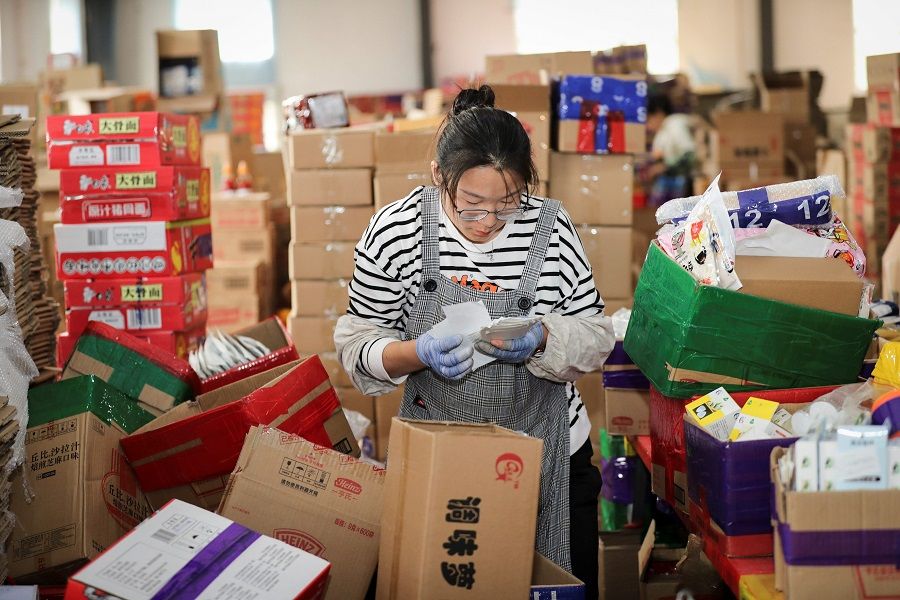Chinese housewives: The driving force behind China's e-commerce platforms

E-commerce possesses a business efficiency that is unmatched by traditional brick-and-mortar retail stores. At present, China's e-commerce penetration rate is the highest in the world, despite its e-commerce industry taking off later than the US's. Between January and May 2020, China's online retail sales totalled 4.02 trillion RMB, or a 4.5% increase year-on-year. Of the total online retail sales volume, 3.37 trillion RMB was attributed to online sales of physical goods, or an 11.5% increase year-on-year. This also accounted for 24.3% of total retail sales of consumer goods, and was a consistent increase from 18% and 20% in 2018 and 2019 respectively.
A commonly overlooked reason for China's high e-commerce penetration rate is its large population of early e-commerce adopters: the housewives.
Unlike the traditional retail industry, e-commerce platforms must overcome the problem of price discrimination or that of different vendors charging different prices for the same product. When a customer enters a physical store, he is unlikely to go to another shop just to get the product for a better price. For example, when a customer looking for cosmetic products walks into a physical store and sees a product she wants to buy, even if she knows of another mall 3km away that sells the same product for 3 RMB less, she would likely still buy the product there and then due to the transportation costs and the time she would waste travelling to the other mall.
Ensuring that bargain hunters drive up sales volume and bring in regular spenders
But e-commerce platforms are different. Users need only press a button and immediately land on another online store - that is, the cost of going somewhere else is simply the act of moving your fingers. Thus, among online stores that sell the same products, stores that offer products at discounted prices would earn a huge advantage in terms of customer traffic. Undoubtedly, price is not the only factor that customers consider when making a purchase at a certain online store - user reviews, the store's trustworthiness, and the total number of transactions are all factors that influence the buyer's decision-making process.

Thus, business owners of e-commerce platforms hope to achieve an optimal effect through the use of technology. They tend to split users into two categories: the price-conscious customers who do not earn much but who have more time on their hands and are willing to spend more time on the app; the customers who earn a higher income and have a higher opportunity cost in terms of time. Customers with such a profile are usually unwilling to spend too much time on the app, choosing to place more value on customer service instead.
When an online store owner launches a new product, the second type of customer will almost certainly not buy a product that has not seen any sales or reviews. Thus, there needs to be a way to lower the product price and entice the first group of customers to make large purchases of the product first. When the product has accumulated a substantial sales volume and reviews, the second group of customers will automatically buy the product at the original retail price.
But there's a catch. This sales tactic is all about making a purchase at the right time, or rather, selling the product at a low price in the early stages of its launch and then raising it to its original price when sales volume becomes high. Thus it is possible that a portion of the second group of customers would already enjoy the lower price while the sales volume are not extremely high yet, and a portion of the first group of customers could miss buying the product because they did not catch the the initial window to buy it when the price was still low.
Thus, the most logical approach is to only display the original price of a product that will still be profitable to the business owners when customers search for the product on e-commerce platforms. Discounted prices that lead to business owners selling the product at a loss are not shown on these platforms. These discounts can only be obtained from various channels using the "hidden coupons" approach that disseminates coupons to price-conscious shoppers. These channels can range from various WeChat group chats seeking out special deals to cashback apps.
Large numbers of price-conscious shoppers gather on these chat groups and apps, and are not too fussed about when they can make the purchase or the tedious steps involved. Thus, when they see a product they wish to buy, they can patiently wait until they see discount coupons on these chat groups and cashback apps before purchasing them. On the other hand, the customers with a relatively higher opportunity cost in terms of time will not spend long hours on these chat groups and cashback apps waiting for discounts. Thus, they would end up purchasing products at the original price.
Which group of people have ample time on hand, are not bothered by operating costs, are keen buyers, and who are also extremely price-conscious? Full-time housewives.

Housewives natural fit to be e-commerce champions
This then leads to a simple and sustainable mechanism to receive discounts, as well as an ongoing motivation to promote e-commerce platforms. In terms of giving incentives, as business owners rely on various channels to distribute their discount coupons, each person who helps them disseminate the coupons will be given a unique affiliate link, which can be used to receive a certain amount of commission for the traffic they send to the e-commerce platforms.
This operating mechanism began in 2015 with housewives acting as the driving force and pioneering advocates of e-commerce platforms.
Which group of people have ample time on hand, are not bothered by operating costs, are keen buyers, and who are also extremely price-conscious? Full-time housewives. This segment of the population is already the family's purchasing officer, and because they do not earn an income, it becomes their business to save money for the family. As saving money can be a means of income, they have a great motivation. Not only that, large numbers of housewives bother to identify fellow price-conscious shoppers among their relatives and friends, patiently explain to them the different ways of saving money on WeChat groups, and finally turn them into e-commerce platform users.

This operating mechanism began in 2015 with housewives acting as the driving force and pioneering advocates of e-commerce platforms. Over the past four years and more, their tireless word-of-mouth explanations of how such purchasing methods can allow users to buy products at a consistently lower price than at physical stores have almost doubled the proportion of total online retail sales in total retail sales from roughly 12.7% in 2015 to 24.3% this year.
Related: Beware the e-commerce bright spot in Chinese economy | If 4G = short-form videos, 5G = a different reality | Village entrepreneurs' love-hate relationship with e-commerce | You have to be as smart as the Chinese to survive Singles' Day shopping in China | Chinese villagers: The unsung heroes behind China's rapid AI development
